Orthodontics
Orthodontics helps achieve straight & beautiful smiles.
Our orthodontists help correct misaligned teeth and jaws for an improved smile at our Jackson Square Mall dentist office.
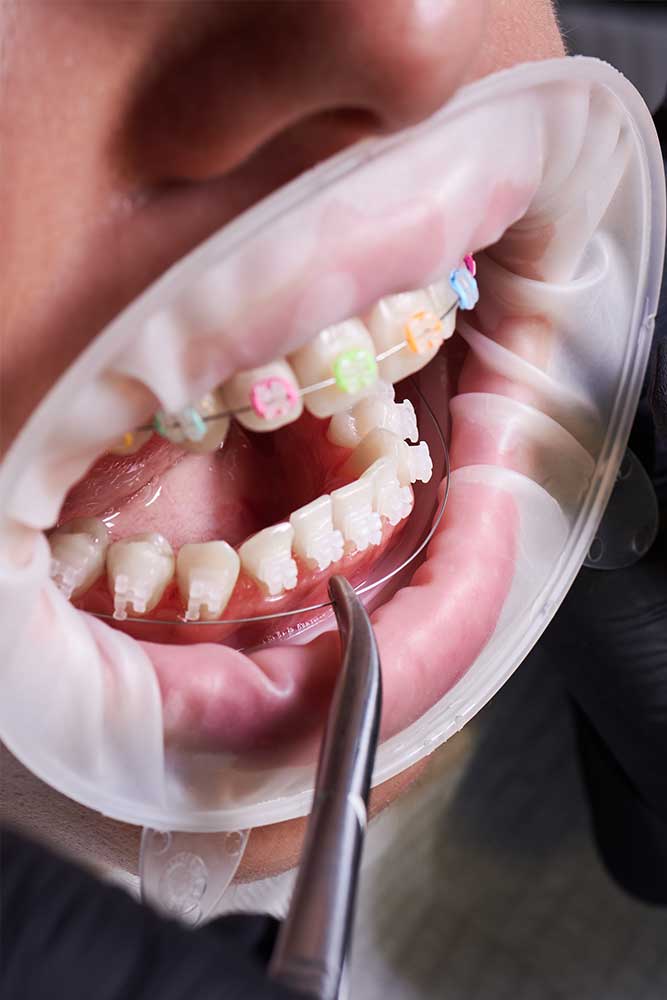
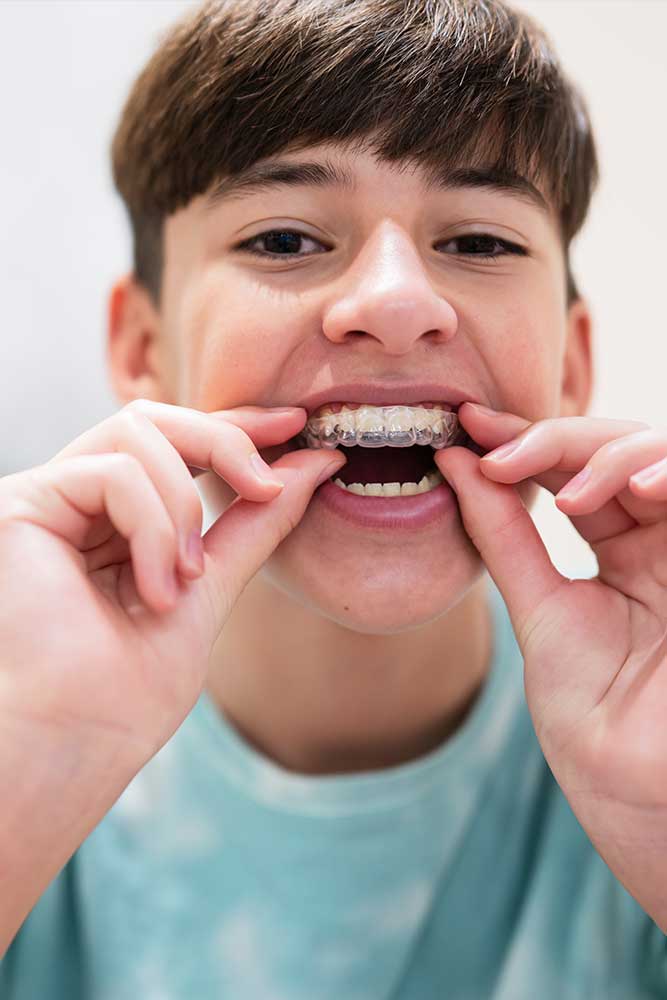

Straight smile.

Healthy smile.
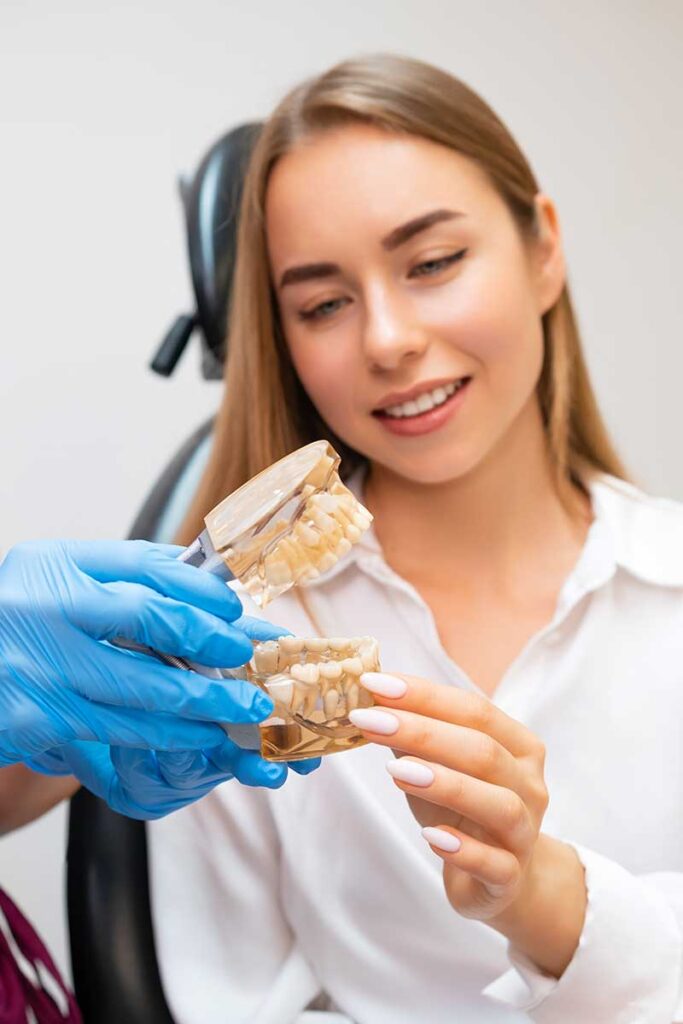
Understanding Orthodontic Treatment
Orthodontics focuses on correcting the alignment of your teeth and jaws to treat common issues such as crooked or crowded teeth, overbites, underbites and crossbites.
Orthodontics is most commonly associated with teenagers, but many adults can also greatly benefit from treatment. Modern orthodontics provides many treatment options that help patients of all ages achieve a better smile.
What is the purpose of orthodontics?
Orthodontic treatments improve the appearance and functionality of your smile. When teeth are properly aligned, they are easier to clean, which reduces the risk of tooth decay, gum disease, and other dental problems. Orthodontics also aims to improve bite function to make it easier to chew and speak correctly.
Orthodontics directly influences a patient’s oral and overall health, which is why our office emphasizes addressing any issues.
Understanding Orthodontic Treatment
Orthodontics focuses on correcting the alignment of your teeth and jaws to treat common issues such as crooked or crowded teeth, overbites, underbites and crossbites.
Orthodontics is most commonly associated with teenagers, but many adults can also greatly benefit from treatment. Modern orthodontics provides many treatment options that help patients of all ages achieve a better smile.
What is the purpose of orthodontics?
Orthodontic treatments improve the appearance and functionality of your smile. When teeth are properly aligned, they are easier to clean, which reduces the risk of tooth decay, gum disease, and other dental problems. Orthodontics also aims to improve bite function to make it easier to chew and speak correctly.
Orthodontic treatment options
Modern orthodontics offers several treatment options depending on your needs and preferences. The most common treatment options our Hamilton orthodontists recommend include traditional braces, clear braces, Invisalign clear aligners, lingual braces and retainers.
To determine the most suitable treatment option for you, our Jackson Square orthodontists team will evaluate your dental conditions and help you make an informed decision to enhance your smile.
Traditional braces
Also often referred to as metal braces, this variety is made out of high-grade stainless steel brackets, wire and elastic ties. The brackets are bonded to each tooth, and a wire is threaded through them to join them together. The wire is tightened to apply pressure that gradually moves teeth into their preferred position. These fixed braces are suitable for a wide variety and severity of orthodontic corrections but cannot be removed to eat. They offer an effective, affordable and durable solution but are also the most visible option for braces.
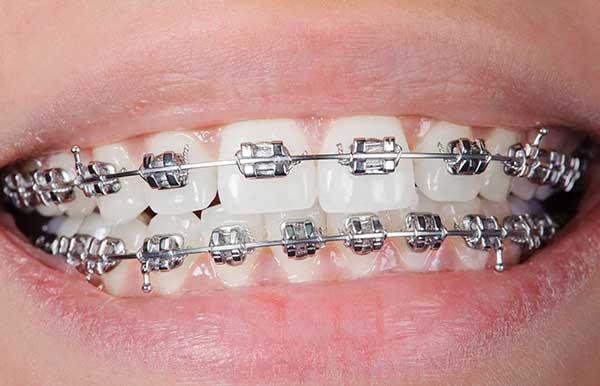
Ceramic & clear braces
Ceramic braces offer an upgrade over metal braces in that they use tooth-coloured ceramic brackets, while clear braces use a plastic compound that is virtually invisible. However, the wire is usually still made from stainless steel and visible. These braces work just like the traditional metal variety but blend better with teeth. They are also suitable for most orthodontic corrections but are slightly less durable than metal, can stain and are more expensive.

Lingual braces
Lingual (meaning “near the tongue”) braces use stainless steel brackets and wires just like traditional braces, except here the brackets and wires are attached to the inside of teeth where they aren’t directly visible. While they can be an option for almost all orthodontic corrections, some complex cases may not work well with lingual braces. They are however, virtually invisible and are often a less painful option for patients lips/cheeks. They are however the most expensive option and can initially affect speech until the patient gets used to wearing them.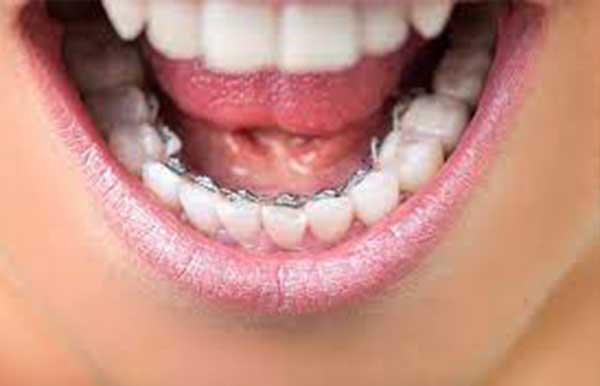
Invisalign (Clear aligners)
Unlike the other three options for orthodontic corrections, clear aligners like Invisalign don’t use brackets and wires to straighten teeth. Instead, these are clear plastic trays resembling mouth guards and are nearly invisible, much more comfortable and can be removed for eating and cleaning. They offer a lot of advantages but are best suited for mild to moderate crowding, gaps and milder misalignments. Clear aligners are unfortunately not an option for all orthodontic corrections.
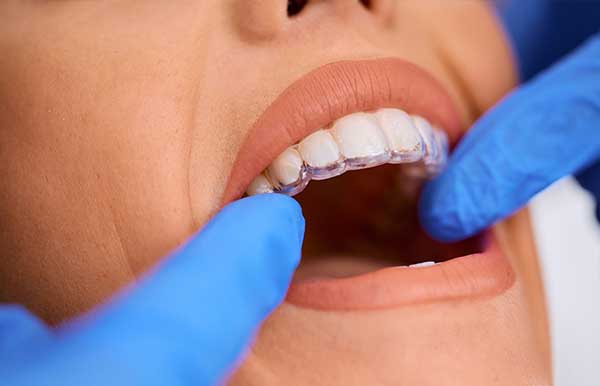
Orthodontic retainers
Retainers feature an acrylic platform that is moulded to fit the roof of a patients mouth and has a thin metal wire attached which wraps around the front of the teeth. Retainers work best when used after braces, to keep teeth from reverting to their original shape, but can sometimes be used to correct mild issues. They are removeable for cleaning and eating, nearly invisible and can be adjusted easily. They can however affect speech and require discipline to wear correctly.
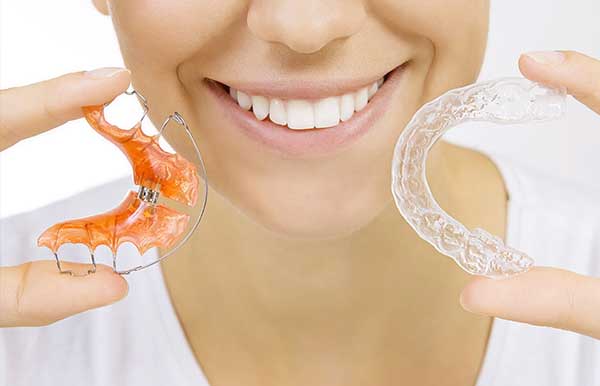
Are Martindale Dental orthodontics right for you?
Our Hamilton orthodontist team specializes in correcting smiles for patients of all ages. From braces to clear aligners and retainers, our orthodontists are experts at determining the correct treatment plan and ensuring the results are as intended. Please get in touch with our office to schedule a first consultation and to learn more.

Highly qualified and certified orthodontics team.

Full service treatment options: pediatric orthodontics, adult orthodontincs, complex cases.

Variety of treatment options: braces, aligners, lingual braces, and retainers.

Full communication every step of the way.

Digital scanning and 3D treatment planning technology.

Emphasis on patient comfort and success.
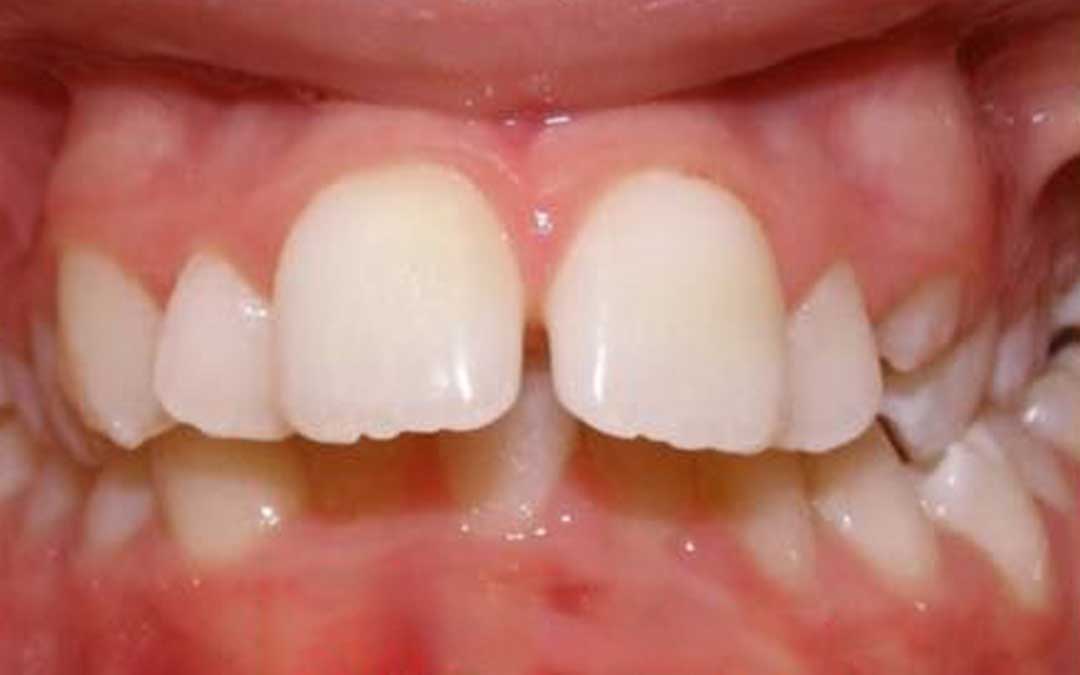
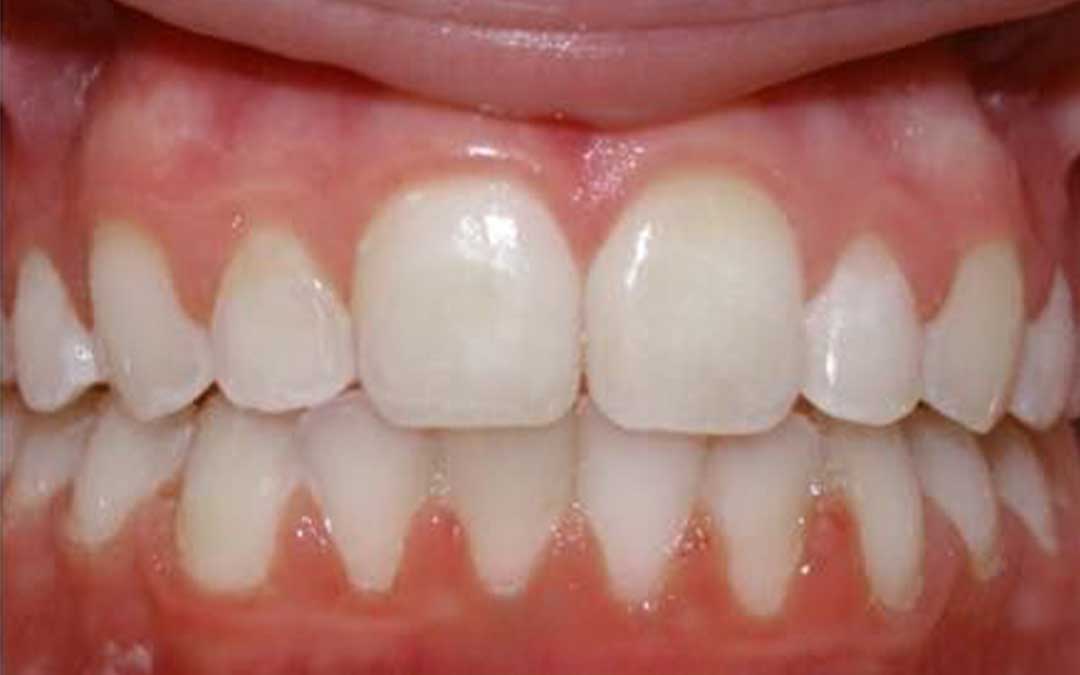
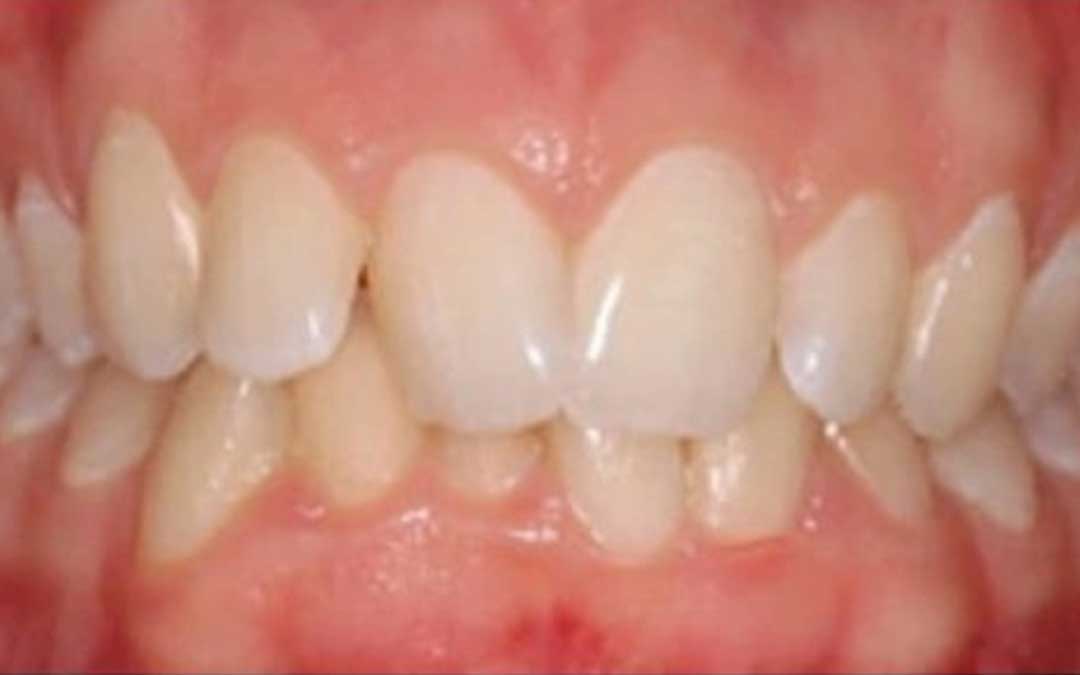
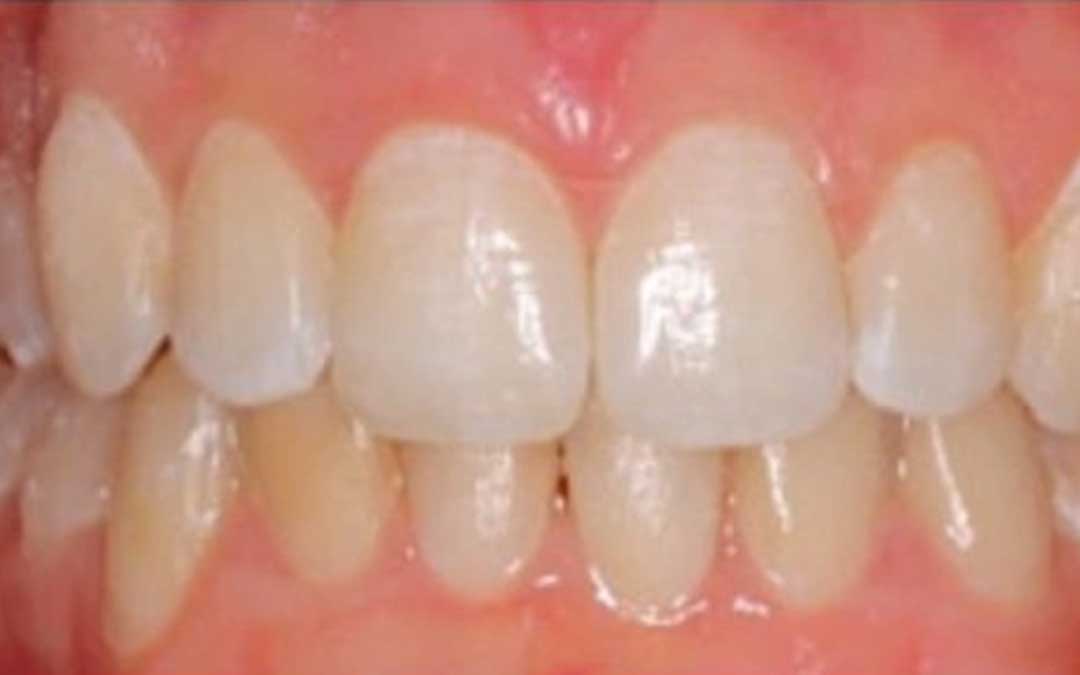
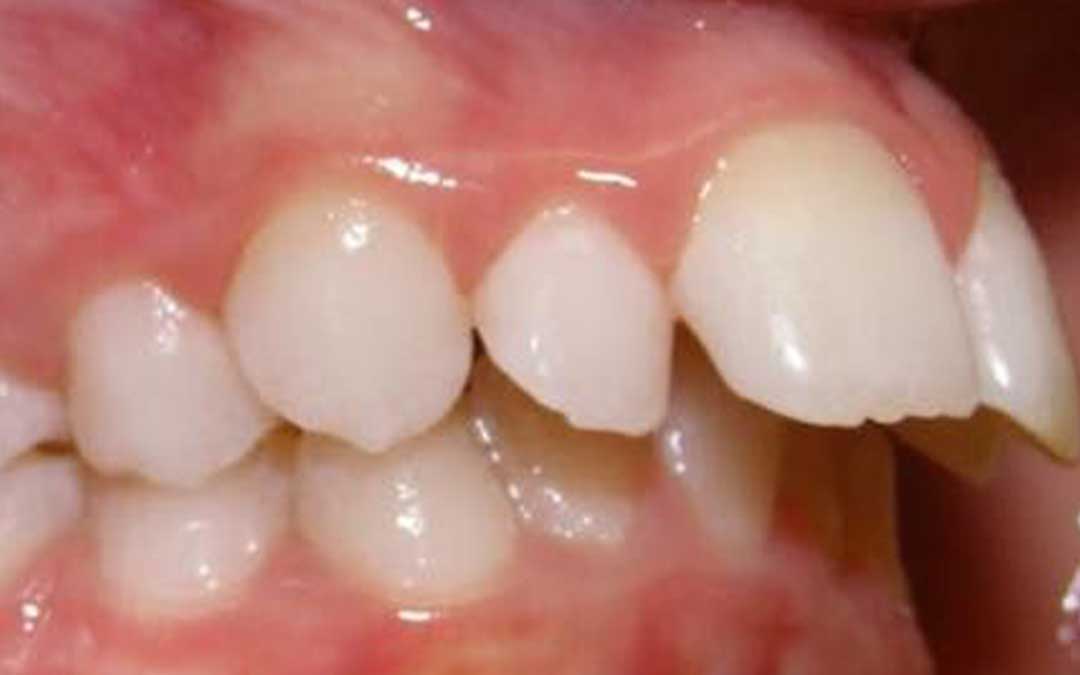
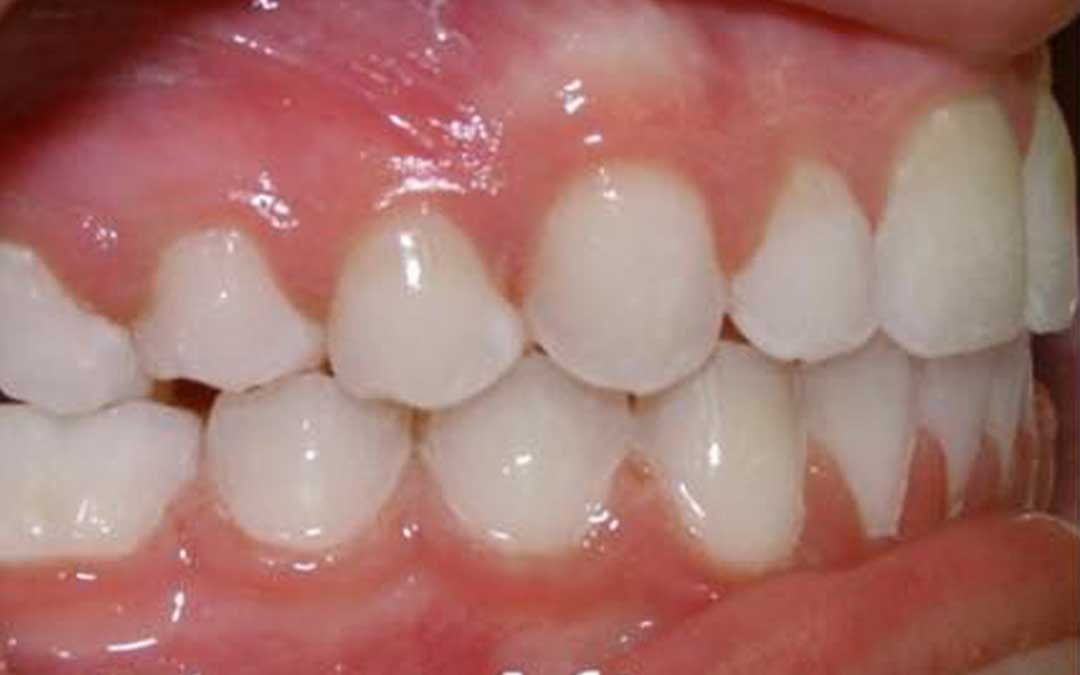
Am I too old for orthodontics?
When many people think of orthodontics, they picture a child or teenager with braces on their teeth, but that can be a very misleading image. Orthodontics has been so associated with teens because having a properly aligned smile is important throughout life. That means we fix the issues as soon as possible instead of waiting until the patient is 40 to start correcting things.
That said, orthodontic treatments for adults offer incredible benefits to patients of all ages. You’re never too old to improve your smile cosmetically and functionally by correcting misalignments to improve your overall dental health.
At our clinic, we offer age-specific orthodontic services tailored to meet the unique needs of each life stage, ensuring effective and personalized care for children, teens, and adults.
Pediatric orthodontics
For our youngest patients, pediatric orthodontics focuses on early assessments and preventive treatments that guide jaw growth and correct developmental issues before they become more complex. Teens, who may be self-conscious about their appearance, can choose from various aesthetic options, such as clear braces or aligners, designed to improve compliance and comfort without sacrificing effectiveness.
Adult orthodontics
For adults, we address specific challenges, such as the treatment of more entrenched dental issues, while also highlighting the advantages of adult orthodontics, like improved dental health and aesthetics.
Each treatment plan is crafted considering the patient’s age, lifestyle, and orthodontic needs, ensuring everyone receives the most appropriate and efficient care.
The orthodontic process explained
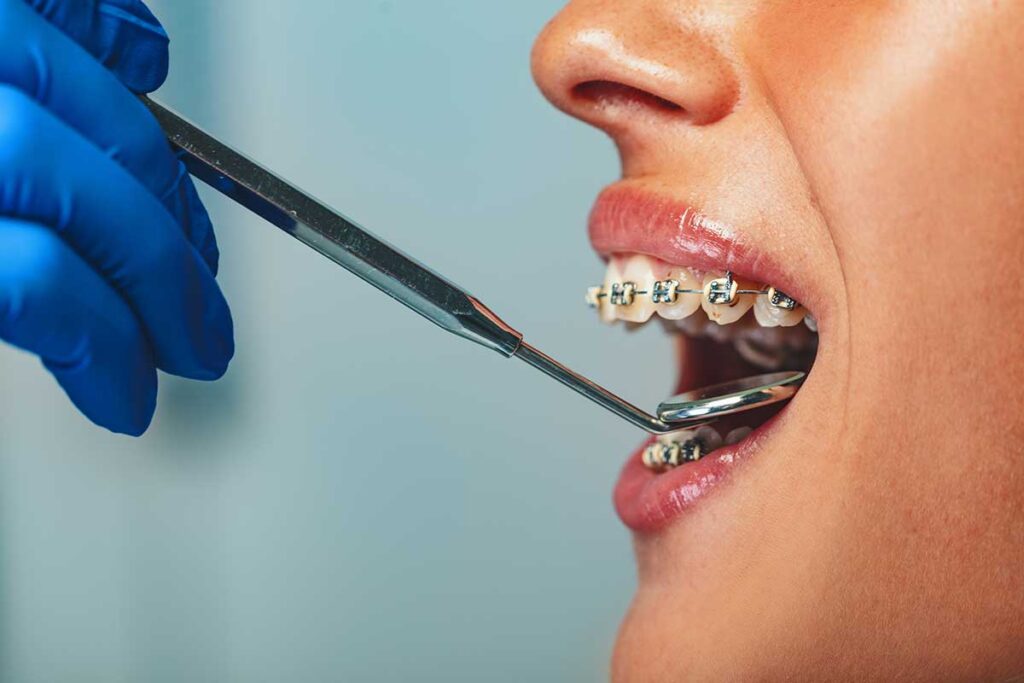
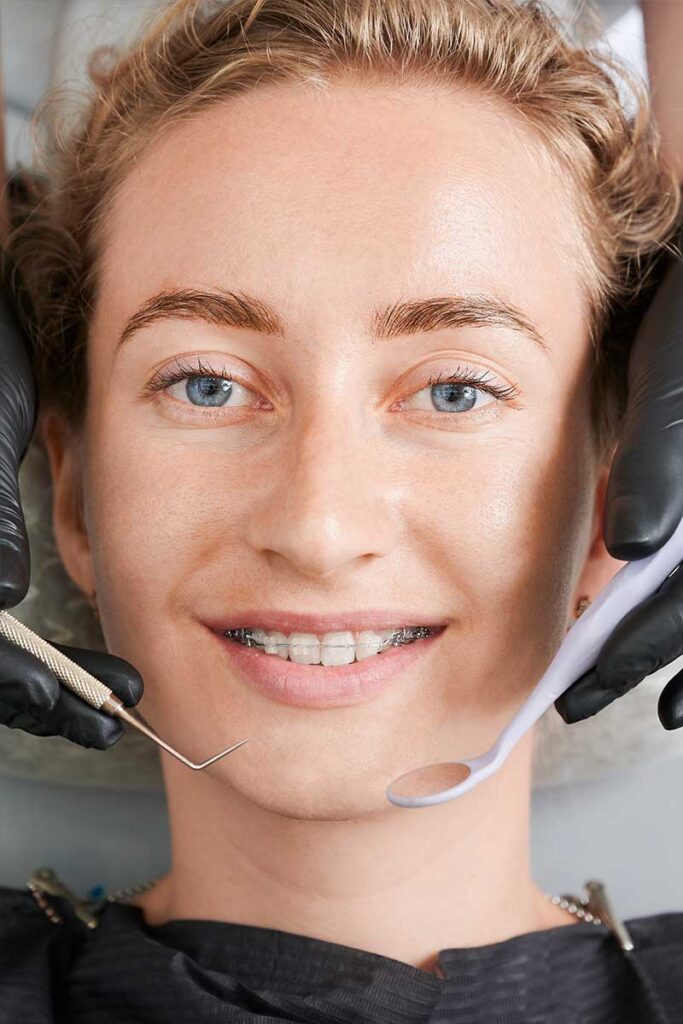
During this initial visit, the orthodontist will conduct a thorough examination of the patient’s teeth, mouth, and jaw. They’ll check for any issues that might affect the treatment, like cavities or gum disease. X-rays, photographs, and digital scans may be requested to create a precise map of their mouth. This is also an opportunity for patients to discuss their goals and concerns.
Using the information gathered during the initial consultation, the orthodontist will develop a customized treatment plan. This plan will detail the type of orthodontic device (like braces or aligners) best suited to the patient’s needs, the estimated length of treatment, and any preparatory work needed (such as cleaning, cavities, extractions or spacers).
If Invisalign clear aligners are chosen, the patient will have molds of their mouth taken to be sent to the lab for manufacturing.
For patients getting braces, this step involves attaching the brackets to the teeth, connecting them with a wire, and securing everything with elastic bands. If the patient is using aligners, they will receive their first set and instructions on how to wear and care for them. The orthodontist will also explain how to properly clean the device and manage any discomfort.
Orthodontic treatment requires regular check-ups and adjustments. For braces, this typically means visiting the orthodontist every 4-6 weeks to tighten or adjust the wires and bands, which gradually move the teeth into the desired position. For aligners, patients may switch to a new set every few weeks. During these visits, the orthodontist will also monitor progress and make any necessary changes to the treatment plan.
Throughout treatment, patients might encounter issues such as discomfort, broken brackets, or the sensation of the appliance being too tight or loose. It’s important to contact the orthodontist for advice and possible adjustments. They can provide solutions or modifications to relieve any discomfort or address any functional issues.
Once the teeth have reached their intended positions, the active phase of treatment ends. The braces or aligners are removed, and this is often a very gratifying visit for patients! Following this, most patients will need to use a retainer to keep their teeth in place. The orthodontist will provide instructions on how often to wear the retainer, as the specifics can vary from person to person.
Our expertise
Our experience
Our quality
Our skilled dental professionals and staff are experts in crown and bridge procedures. Our office specializes in restoring and enhancing smiles using the latest techniques and technology to ensure functional and aesthetically pleasing dental restorations.
Our team has the experience to provide personalized solutions that blend seamlessly with your natural teeth. From the first consultation to the final fitting, our team knows how to make the procedure process hassle-free and successful.
We understand the importance of function and aesthetics, which is why we use only the highest-quality materials and cutting-edge techniques. Our smile restoration work ensures every patient leaves our clinic with a stronger, more beautiful smile.
Orthodontics FAQ
Treatment time varies depending on the severity of your case. Adult treatment typically takes 12-24 months, while children’s treatment may be shorter.
You may experience some minor speech impediments during the initial adjustment period, but this usually resolves quickly.
Have questions or concerns about orthodontics?
Book your free consultation at our
Jackson Square Mall location now.
Orthodontics
Orthodontics helps achieve straight & beautiful smiles.
Our orthodontists help correct misaligned teeth and jaws for an improved smile at our Jackson Square Mall dentist office.
smile.

Healthy smile.
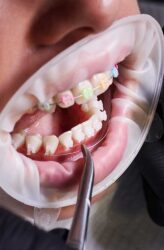

Understanding Orthodontic Treatment
Orthodontics focuses on correcting the alignment of your teeth and jaws to treat common issues such as crooked or crowded teeth, overbites, underbites and crossbites. Orthodontics is most commonly associated with teenagers, but many adults can also greatly benefit from treatment. Modern orthodontics provides many treatment options that help patients of all ages achieve a better smile.What is the purpose of orthodontics?
Your dentist will determine whether dental crowns are the best restoration option for your situation or if procedures such as dental veneers or dental implants would provide a better treatment outcome.
Orthodontic treatment options
Modern orthodontics offers several treatment options depending on your needs and preferences. The most common treatment options our Hamilton orthodontists recommend include traditional braces, clear braces, Invisalign clear aligners, lingual braces and retainers. To determine the most suitable treatment option for you, our Jackson Square orthodontists team will evaluate your dental conditions and help you make an informed decision to enhance your smile.Traditional braces
 Also often referred to as metal braces, this variety is made out of high-grade stainless steel brackets, wire and elastic ties. The brackets are bonded to each tooth, and a wire is threaded through them to join them together. The wire is tightened to apply pressure that gradually moves teeth into their preferred position. These fixed braces are suitable for a wide variety and severity of orthodontic corrections but cannot be removed to eat. They offer an effective, affordable and durable solution but are also the most visible option for braces.
Also often referred to as metal braces, this variety is made out of high-grade stainless steel brackets, wire and elastic ties. The brackets are bonded to each tooth, and a wire is threaded through them to join them together. The wire is tightened to apply pressure that gradually moves teeth into their preferred position. These fixed braces are suitable for a wide variety and severity of orthodontic corrections but cannot be removed to eat. They offer an effective, affordable and durable solution but are also the most visible option for braces.
Ceramic & clear braces
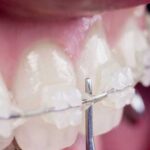 Ceramic braces offer an upgrade over metal braces in that they use tooth-coloured ceramic brackets, while clear braces use a plastic compound that is virtually invisible. However, the wire is usually still made from stainless steel and visible. These braces work just like the traditional metal variety but blend better with teeth. They are also suitable for most orthodontic corrections but are slightly less durable than metal, can stain and are more expensive.
Ceramic braces offer an upgrade over metal braces in that they use tooth-coloured ceramic brackets, while clear braces use a plastic compound that is virtually invisible. However, the wire is usually still made from stainless steel and visible. These braces work just like the traditional metal variety but blend better with teeth. They are also suitable for most orthodontic corrections but are slightly less durable than metal, can stain and are more expensive.
Lingual braces
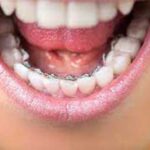 Lingual (meaning “near the tongue”) braces use stainless steel brackets and wires just like traditional braces, except here the brackets and wires are attached to the inside of teeth where they aren’t directly visible. While they can be an option for almost all orthodontic corrections, some complex cases may not work well with lingual braces. They are however, virtually invisible and are often a less painful option for patients lips/cheeks. They are however the most expensive option and can initially affect speech until the patient gets used to wearing them.
Lingual (meaning “near the tongue”) braces use stainless steel brackets and wires just like traditional braces, except here the brackets and wires are attached to the inside of teeth where they aren’t directly visible. While they can be an option for almost all orthodontic corrections, some complex cases may not work well with lingual braces. They are however, virtually invisible and are often a less painful option for patients lips/cheeks. They are however the most expensive option and can initially affect speech until the patient gets used to wearing them.
Invisalign (Clear aligners)
 Unlike the other three options for orthodontic corrections, clear aligners like Invisalign don’t use brackets and wires to straighten teeth. Instead, these are clear plastic trays resembling mouth guards and are nearly invisible, much more comfortable and can be removed for eating and cleaning. They offer a lot of advantages but are best suited for mild to moderate crowding, gaps and milder misalignments. Clear aligners are unfortunately not an option for all orthodontic corrections.
Unlike the other three options for orthodontic corrections, clear aligners like Invisalign don’t use brackets and wires to straighten teeth. Instead, these are clear plastic trays resembling mouth guards and are nearly invisible, much more comfortable and can be removed for eating and cleaning. They offer a lot of advantages but are best suited for mild to moderate crowding, gaps and milder misalignments. Clear aligners are unfortunately not an option for all orthodontic corrections.
Orthodontic retainers
 Retainers feature an acrylic platform that is moulded to fit the roof of a patient’s mouth and has a thin metal wire attached, which wraps around the front of the teeth. Retainers work best when used after braces to keep teeth from reverting to their original shape, but can sometimes be used to correct mild issues. Removable for cleaning and eating, they are nearly invisible and can be adjusted quickly. They can, however, affect speech and require discipline to wear correctly.
Retainers feature an acrylic platform that is moulded to fit the roof of a patient’s mouth and has a thin metal wire attached, which wraps around the front of the teeth. Retainers work best when used after braces to keep teeth from reverting to their original shape, but can sometimes be used to correct mild issues. Removable for cleaning and eating, they are nearly invisible and can be adjusted quickly. They can, however, affect speech and require discipline to wear correctly.
Are Martindale Dental orthodontics right for you?

Highly qualified & certified orthodontics team.

Full service treatment options: pediatric orthodontics, adult orthodontincs, complex cases.

Variety of treatment options: braces, aligners, lingual braces, and retainers.

Full communication every step of the way.

Digital scanning and 3D treatment planning technology.

Emphasis on patient comfort and success.






Am I too old for orthodontics?
When many people think of orthodontics, they picture a child or teenager with braces on their teeth, but that can be a very misleading image. Orthodontics has been so associated with teens because having a properly aligned smile is important throughout life. That means we fix the issues as soon as possible instead of waiting until the patient is 40 to start correcting things.
That said, orthodontic treatments for adults offer incredible benefits to patients of all ages. You’re never too old to improve your smile cosmetically and functionally by correcting misalignments to improve your overall dental health.
At our clinic, we offer age-specific orthodontic services tailored to meet the unique needs of each life stage, ensuring effective and personalized care for children, teens, and adults.
The orthodontic process explained

Orthodontics FAQ
Have questions or concerns about orthodontics?
Book your free consultation at our
Jackson Square Mall location now.
